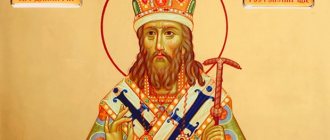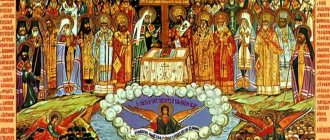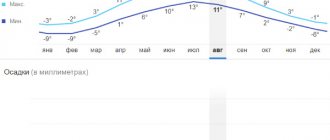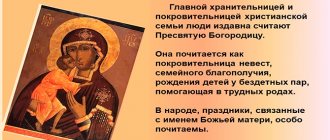Chet'i-Minei is a collection of monuments of ancient Russian literature, compiled by Saint Macarius in the first half of the 16th century. The title of the collection can be translated as “Big Monthly Readings”, since it consists of 12 volumes, which included the lives of saints, works of church writers, collections of patericons, texts of a historical and moralizing nature by Russian authors, arranged in order of celebrating the memory of saints according to the Orthodox calendar on every month. The materials in the collection were approved by the church and were intended for home reading.
about the author
Metropolitan of Moscow and All Rus' Macarius was an outstanding hierarch of the Russian Church. Born in Moscow around 1482, at baptism he was named in the name of Archangel Michael. He received the name “Makarii” when he was tonsured a monk at the Pafnutevo-Borovsky Monastery of the Nativity of the Virgin Mary in honor of the Orthodox ascetic hermit Macarius of Egypt.
In 1526 he was ordained Archbishop of Novgorod and Pskov. Under him, more than 40 churches were built and improved in Novgorod, a pulpit was installed in the St. Sophia Cathedral, new, richly decorated royal doors were made, images of St. Sophia and the Holy Trinity were painted above the entrance to the cohorts.
In 1542 he was elected to the Moscow See as the new metropolitan. In 1547, the Metropolitan of Moscow, for the first time in the history of Russia, crowned the Moscow sovereign Ivan IV. Subsequently, Saint Macarius had a great influence on the tsar and his policies, and was a member of the “Chosen Rada.” In 1552, he blessed the king to set out on a campaign against Kazan and predicted victory. In 1555, in memory of the capture of Kazan, the Cathedral of the Intercession on the Moat, better known today as St. Basil's Cathedral, was founded on Red Square. The Metropolitan personally consecrated this cathedral, a pearl of Russian architecture.
Bishop Macarius died in 1563 and was buried in the Assumption Cathedral. The image of St. Macarius, the Father of the Russian Church, educator and statesman, is immortalized on the “Millennium of Russia” monument, erected in 1862 in Veliky Novgorod. The Metropolitan of Moscow and All Rus' was canonized as a saint in 1988.
Religious activities
As the head of the Russian Church, Saint Macarius convened church councils in 1547 and 1549, during which Russian saints were canonized, and work began on compiling the lives of new saints. In 1551, the famous Hundred-Glavy Local Council was convened, an important decision of which was the rejection of complete secularization. At the same time, restrictions were placed on the further expansion of church lands, and financial restrictions were also introduced on the privileges of the clergy.
Works and creativity
Macarius can be called the patron of printing in Rus'. With his blessing, printing began for the first time in the Kremlin by Deacon Ivan Fedorov. While still the Archbishop of Novgorod, he showed interest in book-writing and literary activities. In 1539, on his initiative, the Novgorod Vladychny Code was compiled, which is a continuation of the chronicle of Novgorod IV, which was based on the Vladychny Code of Archbishop Euthymius. The Archbishop of Macarius continued the traditions of chronicling the past and at the same time reflected the trends of his time, showing the problems of the Novgorod diocese.
Also, under his leadership, a set of canonical rules was compiled, called the Consolidated Helmsman's Book. Another important work of the saint was the famous “State Book of the Royal Genealogy”, compiled on his initiative, which was the first attempt to systematize Russian history. It covers the period from Vladimir the Baptist to Ivan the Terrible and his son Tsarevich Dimitri. The writer glorifies the Moscow monarchy and seeks to establish the idea that royal power is of divine origin. In the 17th century, the Book of Degrees became one of the most widely read works.
The most famous works:
- Novgorod Vladychny Vault;
- Degree book of the royal genealogy;
- Pilot's book;
- Great Chetyi-Minea.
The most significant work is the Great Chetya Menaion of Metropolitan Macarius.
Notes[ | ]
- Krivko R. N.
Mineya // Great Russian Encyclopedia. T. 20. M., 2012, pp. 360-361. - ↑ 123
BRE, 2006, p. 742. - Chetii-Minei // Great Russian Encyclopedia. T. 34. M., 2017, p. 515.
- ↑ 1 2 3 4 5 6 7 8 9 10 11 Droblenkova N. F.
Great Menaions of Cheti // Dictionary of scribes and bookishness of Ancient Russia: [in 4 issues] / Ross. acad. Sciences, Institute of Rus. lit. (Pushkin House); resp. ed. D. S. Likhachev [and others]. L.: Nauka, 1987—2017. Vol. 2: Second half of the XIV-XVI centuries, part 1: A-K / ed. D. M. Bulanin, G. M. Prokhorov. L., 1988. - Protasyeva T. N.
Description of the manuscripts of the Synodal Assembly not included in the description of A. V. Gorsky and K. I. Nevostruev (Part 1, No. 577-819) / Ed. M. V. Shchepkina. - M., 1970. - No. 784-795 (986-997), p. 174-190. - Ibid., No. 796-805 (174-183), p. 191-207.
- Kuchkin V. A.
On the formation of the Great Menaions of the Fourth Metropolitan Macarius // Bibliology and its tasks in the light of current problems of the Soviet book business: Abstracts of the Second All-Union Scientific Conference on the Problems of Bibliology; Handwritten book section. M., 1974. S. 22-26. - Gorsky A.V., Nevostruev K.I.
Description of the Great Four Menaions of Macarius, Metropolitan of All Russia / With a preface. and additional E. V. Barsova // Readings at the Society of Russian History and Antiquities. 1884. Book. 1, dept. 2. S. X. - Bugoslavsky S.A.
Abridged edition of the Great Chetya Menaion for the month of May in the manuscript of the Kazan Theological Academy of 1569 No. 514 (533) (631) // News of the Department of Russian Language and Literature. 1913. T. 18, book. 4. pp. 347-351. - Droblenkova N.F.
Early version of the December Great Menaion of Chetya // Cultural heritage of Ancient Russia: Origins, formation, traditions. M., 1976. S. 386-390. - Speransky M.N.
September Minea The Domakaryevsky Chapter // Collection of the Department of Russian Language and Literature.
- St. Petersburg, 1896. - T. 64, No. 4. - P. 1-23; Speransky M.N.
Oktyabrskaya Minea Chapter of the Domakaryev composition // News of the Department of Russian Language and Literature. - 1901. - T. 6, book. 1. - pp. 57-87. - Orlov A. S.
Book of the Russian Middle Ages and its encyclopedic types // Dokl. Academy of Sciences of the USSR. Ser. In, 1931, No. 3. S. 37, 48. - Issues of the publication are indicated: Droblenkova N. F.
Great Menaions of Chetia // Proceedings of the Department of Old Russian Literature. 1985. T. 39. P. 242. - Great Menaion of Cheti. Teachings on the Sunday of Saints Forefathers (Russian). Russian faith. ruvera.ru. Access date: April 14, 2022.
- Known in two lists: State Historical Museum, Synod. collection, No. 587 and 694 and in a draft autograph from the collection of M. P. Pogodin, collection of P. M. Stroev.
From the history of the creation of Chetya-Minea
Materials for the Makaryevsky Menyas have been collected for more than 25 years.
The collection was based on various texts, including:
- celebrants;
- hagiographical writings;
- lives of saints;
- Russian and translated texts of the patericons (Alphabetical Jerusalem, Sinai, Egyptian, Skete, Kiev-Pechersk and Consolidated);
- biblical books and explanatory Psalms;
- works of the Church Fathers: Basil the Great, Gregory the Theologian;
- materials from the collections: Chrysostom, Zlatostruya, Margarita, Taktikona;
- charters, acts, charters, apocrypha.
When compiling the Menaion on the basis of ancient texts, new editions and translations were written, and translated works were verified and corrected according to their Greek originals.
Many Russian writers, translators, scribes and scribes worked on the creation of texts:
- theologian Zinovy Otensky;
- writers and publicists: Lev Philologist, Vasily Tuchkov-Morozov, Ermolai Erasmus;
- clerk Dmitry Gerasimov;
- Pskov priest-hagiographer Vasily-Varlaam;
- Presbyter Ilya.
“For the salvation of the soul,” the highest church hierarchs of the 16th century also worked on the Chetya-Menaia: Bishop Savva Cherny of Krutitsy, Archbishop Feodosius of Novgorod, Bishop Joasaph of Vladimir and Vologda. In total, about 27 thousand handwritten pages were written, richly decorated with colorful patterns.
Editorials of Menaion
Three fully completed lists of Makaryevsky Menyas are known. The lists received their names from the places where they were originally stored.
Each list represents an independent edition of the collection:
- Sofia;
- Uspenskaya;
- Tsarskaya.
Materials for the initial edition - the Sofia List - were collected in all Novgorod and Pskov libraries: Vyazhitskaya, Sofia, Otenskaya and others. Work on the Tsar's and Assumption lists was also carried out in Novgorod, but, having become Metropolitan of Moscow and All Rus' in 1542, Macarius was already able to attract scribes and copyists from various monasteries and cities of Russia to work on the lists. And the final preparation of the lists most likely took place under his supervision in the Moscow Metropolitan Scriptorium.
The creation of the Sophia list began in Novgorod at the archbishop's house around 1529 and continued for 12 years. The Sophia list was created on the basis of new and corrected translations of the original Greek texts by the works of various scribes, translators and clerks. As evidenced by the insert notes (“Chronicles” of Macarius), Macarius deposited 12 books from the Sophia list into the Novgorod St. Sophia Cathedral “in commemoration of the souls” of his parents in 1541. Of the 12 books of the Sophia list, only 8 have survived to this day - copies for December were lost , January, March and April. 7 books are part of the Sofia collection of the Russian National Library, and one volume for August is stored in the Central State Archive of Ancient Acts.
Macarius made 12 Assumption volumes as a contribution “for the memory of his soul and for his parents in eternal remembrance” to the Assumption Kremlin Cathedral in 1552, where this set was kept until 1886, after which it was transferred to the Synodal (Patriarchal) library. The Assumption list is the only one of all three that has been preserved in its entirety. It is in the Synodal Collection of the State Historical Museum.
The creation of the Tsar's list, intended for Tsar Ivan the Terrible, continued as early as 1554. In the 17th century, the Tsar's list was kept in the royal chambers. There are two books missing from this list (March, April); the surviving ten books are kept in the Synodal Collection of the State Historical Museum.
About reissues
In the 17th century, the Makaryevsky Menaions were used as the basis for the Menaions of the Chety Chudovskys by German Tulupov in 1600, and in the 17th and early 18th centuries - as the basis for the Menaions of Dmitry Rostov, which began to be published in Kyiv. Dimitri Rostovsky partially supplemented the new collection with materials from Latin and Greek books.
Starting from the middle of the 17th century, the Menaions ceased to be published; all works on collecting the lives of saints were attributed to Demetrius of Rostov. The lives of the saints of the 18th century began to be called “The Lives of the Saints of Demetrius of Rostov.”
The collection was published in 1863-1916. Archaeographical Commission, but only books were published from September to April.
At the beginning of the 21st century, the Menaion had not been published in full in printed or electronic form.
Translation of the text into modern Russian was started by Kirill Melamud in 2016.
Study[ | ]
The study of the “Great Mena-Chets” began at the end of the 17th century with a description of their composition, when the director of the Printing House, monk Euthymius, compiled a brief “Table of Contents” of the “Great Mena-Chets” according to the Assumption list[15]. In 1847, the “Table of Contents” was published by V. M. Undolsky. Subsequent descriptions of the composition of the “Great Mena-Chets” belong to Savva (1858), Joseph (1892; complete table of contents of the Assumption list), A. V. Gorsky and K. I. Nevostruev (scientific article-by-article description of the “Great Mena-Chets” from September 1 to May 26; prepared for publication in 1884 and 1886 by E.V. Barsov) and T.N. Protasyeva (supplemented this description with unincluded materials and indications of Russian original articles in the Assumption and Tsar’s lists) [4].
Literary features
The Chet'i-Minei are a kind of collection of all the literature of Ancient Rus', in which, according to the idea of Metropolitan Macarius, all the books of the Russian land are collected, that is, almost all the spiritual, educational and ecclesiastical narrative literature that existed at that time in Rus'. Each story about an ancient story or life was followed by teachings that were to be read on the days of remembrance of the saints.
Genre features
The menaion genre began to take shape in Byzantium in the 10th century. There were two main types of genre: service, intended mainly for clergy, and general, intended for a wider range of readers of spiritual literature. The composition of the collection is large and varied, so the text is represented by various genres.
Composition
The composition of the work is built in accordance with the idea of arranging the material according to the days and months of the church calendar. In each of the 12 books, the texts are selected and arranged according to the days on which the saint’s memory falls. Those materials that did not lend themselves to the general logic of distribution, that had no connection with the name of any saint, were placed in the last days of the month as a kind of addition.
Language and style
The compilers strove for an equal volume of all books, each of which has approximately 1500-2000 sheets of “Alexandrian” format, divided into two columns, written in half-format and decorated with elegant inserts of the New Byzantine style - a golden background with a predominance of blue designs. The titles are written in clear cinnabar script.
The creation of the collection was preceded by a huge amount of editorial work, which consisted of stylistic processing of the motley material included in the Menaion, in order to present the presentation in a single eloquent, solemn style, since the general style was supposed to emphasize the growing power of the Moscow Orthodox State. The monumentality of the collection is also associated with the idea that Moscow is the heir of Byzantium in the world historical process.
icology[ | ]
The compilers strove for approximately equal volume of all 12 books. The external design of the “Great Four Men” is designed in the style of “second monumentalism”. The dimensions of the 12-volume book compilation correspond to the name “Great” menaia, in contrast to the significantly smaller minaia of the Domakaryev composition. Each of them, 12 books of the “Great Four-Menya”, contains from 1500 to 2000 sheets in the format of an unfolded Alexandrian sheet. The books are written semi-written in different handwritings in two columns and decorated with elegant headpieces of the New Byzantine style. The titles are written in clear cinnabar script. Individual scenes are illuminated. Some of the books have preserved 16th-century bindings with boards cut to fit the sheets, covered in leather decorated with rich embossing. The names of the month are carved in script on the mullions of the green copper[4].
Literature[ | ]
Encyclopedias and reference books
- Minaia-Chetii // Encyclopedic Dictionary of Brockhaus and Efron: in 86 volumes (82 volumes and 4 additional). - St. Petersburg, 1890-1907.
- Great Chetii-Minea // Brasos - Vesh. - M.: Soviet Encyclopedia, 1971. - P. 410. - (Great Soviet Encyclopedia: [in 30 volumes] / chief editor A. M. Prokhorov; 1969-1978, vol. 4).
- Great Chetii-Minea // Greater Caucasus - Great Canal. - M.: Great Russian Encyclopedia, 2006. - P. 742. - (Big Russian Encyclopedia: [in 35 volumes] / chief editor Yu. S. Osipov; 2004-2017, vol. 4). — ISBN 5-85270-333-8.
- Hagiography // Orthodox Encyclopedia. - M., 2008. - T. XIX: “Epistle to the Ephesians - Zverev.” — P. 283—345. — 752 p. — 39,000 copies. — ISBN 978-5-89572-034-9.
- From the Great Mena of the Fourth Metropolitan Macarius // Library of Literature of Ancient Rus' / RAS. Institute of Russian Literature (Pushkin House); Ed. D. S. Likhacheva, L. A. Dmitrieva, A. A. Alekseeva, N. V. Ponyrko. - St. Petersburg. : Science, 2003. - T. 12: XVI century. — 624 p.
Research
- Undolsky V.M.
Bibliographical research on the occasion of the publication of “Description of the Imperial Library. Moscow Society of History and Russian Antiquities” / Comp. P. M. Stroev. - M., 1845 (finished) // Moskvitian. - M., 1846, No. 11-12. - pp. 209-210; - Undolsky V. M.
Contents of the Four Menaions of the All-Russian Metropolitan Macarius, stored in the Moscow Assumption Cathedral, comp. inquiry officer, monk Euthymius // Readings in the Society of Russian History and Antiquities. - 1847. - Book. 4, dept. IV. - pp. III-VIII, 1-78; - Savva, archim.
Index for viewing the Moscow Patriarchal (now Synodal) Library. - M., 1858. - P. 209-211; - Macarius, bishop
About the Novgorod Makariev Four Menaions // Chronicles of Tikhonravov. - M., 1859. - T. 1. - P. 68-73; - Klyuchevsky V. O.
Great Menaions of Chetia, collected.
All-Russian Metropolitan Makariy / Ed. Archaeographer. commissions. - T. 1. September, days 1-13. - St. Petersburg, 1868 (reprint of the review published in the newspaper “Moscow”, 1868, No. 90, June 20) // Klyuchevsky V. O.
Reviews and answers. 3rd collection of articles. - M., 1914. - P. 1-20 (2nd ed. Pgr., 1918); - Klyuchevsky V. O.
Old Russian Lives. - pp. 221-297; - Petrov N.
On the origin and composition of the Slavic Russian printed Prologue: Foreign sources (Continued) // Tr. Kyiv. spirit. acad. - 1875. - No. 5. - P. 348-351; - Sergius, archim.
Complete months of the East. - M., 1875. - T. 1. - P. 203-215, appendix. No. 9, p. 74-130 (2nd ed. Vladimir, 1901. - P. 264-265, 273); - About the Four Menaions // PDP. — No. 4. Minutes of the annual meeting of the Society on April 26, 1879 with appendices: (Reports). - St. Petersburg, 1879. - Issue. 3. - pp. 39-56;
- Veselovsky A.
Notes on literature and folk literature. 3. To the Legend of the Debate between Jews and Christians. - St. Petersburg, 1883 (Collection of the department of Russian language and literature. - T. 32, No. 7). - pp. 26-28; - Vladimirov P.V.
The Great Mirror: (From the history of Russian translated literature of the 17th century) // Readings in the Society of Russian History and Antiquities. - 1883. - Book. 2, dept. 4. - pp. 68-75; - Gorsky A.V., Nevostruev K.I.
Description of the Great Four Menaions of Macarius, Metropolitan of All Russia / With a preface. and additional E. V. Barsova // Readings at the Society of Russian History and Antiquities. - 1884. - Book. 1, dept. 2. - pp. I-XIX, 1-64; 1886. - Book. 1, dept. 2. - pp. 65-184; - Lebedev V.
On the history of the Cyril and Methodius Slavic translation of the Bible in Russia: (Continued) // Wanderer. - St. Petersburg, 1885. - No. 3. - P. 407-411; - Joseph, Archimandrite
Detailed table of contents of the Great Four Menaions of the All-Russian Metropolitan Macarius, stored in the Moscow Patriarchal Church, now the Synodal Library. - M., 1892; - Ponomarev A.I.
The life and ascetic works of St. Sergius of Radonezh according to the ancient Slavic-Russian Prologue and according to the Four Menaions of Metropolitan Macarius // Wanderer. - St. Petersburg, 1892. - No. 9. - P. 3-19; - Speransky M.N.
Protocol of the 14th meeting of the Slavic Commission of the Moscow Archaeological Society: Ref. report about the South Slavic Four Menaions and the reform of Macarius in the Menaions // Antiquities. - 1895. - T. 1. - P. 34-35; - Speransky M.N.
September Minea The Domakaryevsky Chapter // Collection of the Department of Russian Language and Literature. - St. Petersburg, 1896. - T. 64, No. 4. - P. 1-23; - Speransky M.N.
Oktyabrskaya Minea Chapter of the Domakaryev composition // News of the Department of Russian Language and Literature. - 1901. - T. 6, book. 1. - pp. 57-87; - Slavic metaphrastovian Menaia Chetya // News of the Department of Russian Language and Literature. - 1904. - T. 9, book. 4. - pp. 176-189;
- Grebenetsky A.
Words and teachings in the Great Four Menaions of Metropolitan Macarius: Extract from the minutes of the Council of the Kiev Theological Academy for 1900 // Tr. Kyiv. spirit. acad. - 1901. - No. 5, Appendix. - pp. 367-369; - Sirotkin S.M.
Letter regarding the publication and composition of the VMC for the month of December // Chronicle of the activities of the Archaeographic Commission. - 1901. - Issue. 12. Extracts from the protocols. - pp. 126-130; - Abramovich D.I.
Description of the manuscripts of the St. Petersburg Theological Academy: Sofia Library. — Vol. 2. Chetya Menaion; Prologues; Patericon. - St. Petersburg, 1907. - P. 1-154; - Bugoslavsky S.A.
Abridged edition of the Great Chetya Menaion for the month of May in the manuscript of the Kazan Theological Academy of 1569 No. 514 (533) (631) // News of the Department of Russian Language and Literature. - 1913. - T. 18, book. 4. - pp. 347-351; - Mansikka V.
Life of Alexander Nevsky: Analysis of editions and text. - St. Petersburg, 1913. - P. 107-142, Appendix (Monuments of ancient writing and art. - T. 180). - pp. 15-31, 33-48; - Popov N.P.
Autographs of Metropolitan Macarius, collector of the Great Menaions // Chronicle of the activities of the Archaeographic Commission. - St. Petersburg, 1913. - Issue. 25. - P. 5, note. 2; - Popov N.P.
Joseph's Legend of the heresy of the Judaizers according to the lists of the Great Menaions // News of the Department of Russian Language and Literature. - 1913. - T. 18, book. 1. - pp. 173-197; - Popov N.P.
On the emergence of the Moscow Synodal (Patriarchal) Library // Collection. articles for the 40th anniversary of academic activity of academician. A. S. Orlova. - M., 1934. - P. 31, 33-36; - Shestakov D.
Notes on the Greek texts of lives and Makaryev’s Menaions of the Chetiy // BV. - 1914. - No. 2. - P. 369-382; - Serebryansky N.
I. Old Russian princely lives (editor's review and texts). — M.: Society of History and Antiquities grew. at Moscow Univ., 1915. - P. 123-139, 215-217, 257-260, Appendix (No. 31), p. 124-137; - Adrianova V.P.
The Life of Alexei, the Man of God, in Ancient Russian Literature and Folk Literature. - Pg., 1917. - P. 99-107; - Yatsimirsky A.I.
Small texts and notes on ancient South Slavic and Russian literature. LXXXIII—LXXXIV // News of the Department of Russian Language and Literature. - 1917. - T. 22, book. 1. - pp. 27-44; - Shcheglova S. A.
Bogoglasnik: Historical and literary research. - Kyiv, 1918. - P. 208, 231-232, 292-294; - Peretz V. N.
Research and materials on the history of ancient Ukrainian literature of the 16th—18th centuries. IX. To the study of Chetya in 1489 // Collection of Russian language and literature. - L., 1928. - T. 1, issue. 1. - pp. 9-12, 19-21; - Orlov A. S.
Book of the Russian Middle Ages and its encyclopedic types // Dokl. Academy of Sciences of the USSR. Ser. V. - 1931. - No. 3. - P. 37-51; - Central State Archive of Ancient Acts: Guide. - M., 1946. - Part 1. - P. 142 (Manuscript collection of Prince M.A. Obolensky, f. 201. Slavic-Russian chronicles);
- Muravyov N.
Metropolitan Macarius as the compiler of the Great Four Menaia: (To the 400th anniversary of the compilation of the Great Four Menaia) // Journal of the Moscow Patriarchate. - 1953. - No. 5. - P. 49-54; - Protasyeva T. N.
Description of the manuscripts of the Synodal Assembly not included in the description of A. V. Gorsky and K. I. Nevostruev (Part 1, No. 577-819) / Ed. M. V. Shchepkina. - M., 1970. - P. 170-208 (No. 784-807); - Rogov A.I.
Minei: (Reference) // Method. allowance according to the description of Slavic-Russian hands. for the Union Catalog of Manuscripts Stored in the USSR. - M., 1973. - Issue. 1. - pp. 297-305; - Kuchkin V. A.
On the formation of the Great Menaions of the Fourth Metropolitan Macarius // Bibliology and its tasks in the light of current problems of the Soviet book business: Abstracts of the Second All-Union Scientific Conference on the Problems of Bibliology; Handwritten book section. - M., 1974. - P. 22-26; - Kuchkin V. A.
On the formation of the Great Menaion of the Fourth Metropolitan Macarius // Problems of handwritten and printed books. - M., 1976. - P. 86-101; - Droblenkova N.F.
Early version of the December Great Menaion of Chetya // Cultural heritage of Ancient Russia: Origins, formation, traditions. - M., 1976. - P. 386-390; - Droblenkova N. F.
Great Menaions of Chetia // Proceedings of the Department of Old Russian Literature. - 1985. - T. 39. - P. 238-243; - Droblenkova N. F.
From the history of the genre of Four Mineas in Russian literature // Armenian and Russian medieval literature. - Yerevan, 1986. - P. 139-181; - Miller D. V. The Velikie Minei Chetii and the Stepennaia Book of Metropolitan Makarii // Forschungen zur osteuropäischen Geschichte. Berlin; Wiesbaden, 1979. Bd 26. S. 262-382;
- Alekseev V. N.
Trinity book writer German Tulupov // Siberian collection of M. N. Tikhomirov and problems of archeography: Collection. scientific works. - Novosibirsk, 1981. - P. 126-137; - Gavryushin N.K.
The first Russian encyclopedia // Monuments of science and technology. 1982-1983. - M., 1984. - P. 119-130.
Editions[ | ]
- Buslaev F.I.
Historical anthology of Church Slavonic and Old Russian languages. - M., 1861. - Stb. 771-784 (excerpts); - Great Menaion of Chetia, coll. All-Russian Metropolitan Makariy / Ed. Archaeographer. by commission. - T. 1. September, days 1-13. - St. Petersburg, 1868; September, days 14-24. - St. Petersburg, 1869; September, days 25-30. - St. Petersburg, 1883; October, days 1-3. - St. Petersburg, 1870; October, days 4-18. - St. Petersburg, 1874; October, days 19-31. - St. Petersburg, 1880; November, days 1-12. - St. Petersburg, 1897; November, days 13-15. - St. Petersburg, 1899; November, day 16. - M., 1910; November, days 16-17. - M., 1911; November, days 16-22. - M., 1914; November, days 23-25. - M., 1916 (1917); December, days 1-5. - M., 1901; December days 6-17. - M., 1904; December, days 18-23. - M., 1907; December, day 24. - M., 1910, December, days 25-31. - M., 1912; December, day 31. - M., 1914 (issue 14, notebook 1 - not completely); January, days 1-6. - M., 1910; January, days 6-11. - M., 1914; April, days 1-8. - M., 1910; April, days 8-21. - M., 1912; April, days 22-30. - M., 1916;
- “The Book spoken by Kozma Indikoplov” from the hands. Moscow main archive of the Ministry of Foreign Affairs. Menaion of Metropolitan Macarius (Novgorod list; 16th century. Month of August, days 23-31 (collection of the book by Obolensky No. 159) / Published by the Society of Lovers of Ancient Writing. - St. Petersburg, 1886, No. 86);
- From the Great Mena of the Fourth Macarius / Preparatory. text and com. N. F. Droblenkova, trans. N. F. Droblenkova and G. M. Prokhorov // Monuments of literature of Ancient Rus'. 2nd half XVI century - M., 1986. - P. 478-549, 625-634;
- From the Great Mena of the Fourth Metropolitan Macarius // Library of Literature of Ancient Rus' / RAS. Institute of Russian Literature (Pushkin House); Ed. D. S. Likhacheva, L. A. Dmitrieva, A. A. Alekseeva, N. V. Ponyrko. - St. Petersburg. : Science, 2003. - T. 12: XVI century. — 624 p.










